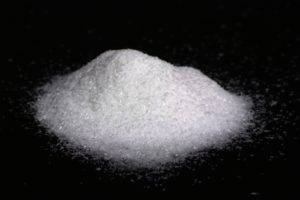 Monosodium glutamate is an additive used as a "flavor enhancer" that has long been used in foods (processed and packaged foods, as well as fast food and restaurant meals) - and it has also been controversial for decades. Even four decades ago some people complained of headaches after having foods with added monosodium glutamate, and since then health complaints have just increased. Since so much is still unknown about the health effects of additives commonly added to foods, then many people just want to avoid them. But it's tricky because manufacturers sneak monosodium glutamate into foods using various other name such as hydrolyzed vegetable protein, autolyzed yeast, glutamic acid, and yeast extract.
Monosodium glutamate is an additive used as a "flavor enhancer" that has long been used in foods (processed and packaged foods, as well as fast food and restaurant meals) - and it has also been controversial for decades. Even four decades ago some people complained of headaches after having foods with added monosodium glutamate, and since then health complaints have just increased. Since so much is still unknown about the health effects of additives commonly added to foods, then many people just want to avoid them. But it's tricky because manufacturers sneak monosodium glutamate into foods using various other name such as hydrolyzed vegetable protein, autolyzed yeast, glutamic acid, and yeast extract.
The FDA points out on its web-site that monosodium glutamate (MSG) is the "sodium salt of the common amino acid glutamic acid" - in other words, it is a form of glutamic acid. Glutamic acid is an amino acid naturally present in our bodies, and found naturally in many foods, such as tomatoes, cheeses, meat, seaweed, and mushrooms. The FDA views MSG as "generally recognized as safe". But even if a form of something may occur naturally in foods, that does NOT mean that we want to eat foods with added forms of it, or that we should be eating food with added additives, including MSG.
Sometimes the term "natural flavor" is used by the food industry for glutamic acid (which is chemically similar to MSG). So read ingredient lists carefully. And note that "natural flavor" can mean many things, that they are produced in a lab, and that the Food and Drug Administration (FDA) does not require disclosure of components and amounts of "natural flavor". From Tech Insider:
Here’s how food companies sneak MSG into foods
That savory, meaty, salty taste you get after taking a bite of Chinese beef and broccoli or after a crunch into a Doritos nacho cheese chip is unmistakable. It hits your tongue, makes it water, and leaves you craving more. MSG, which stands for monosodium glutamate — a naturally-occurring food additive — is largely responsible for that irresistible taste. Chemists have been infusing it into everything from broths, frozen pizzas, flavored potato chips, salad dressings, deli meats, and hot dogs, for more than a century to make them taste addictively delicious.
MSG is a naturally occurring amino acid that makes up proteins in our bodies. But the compound's safety has been debated for years. While it is generally recognized as safe by the Food and Drug Administration, some claim that it can cause adverse reactions in sensitive people, including chest pain, flushing, and sweating. It's also reportedly caused numbness or burning near the mouth and facial pressure or swelling. While there haven't been any studies to back up this claim, it would be helpful for sensitive or MSG-wary people to know which processed foods contain the ingredient. But because the additive can go by many different names, it can be difficult to tell which foods contain it.
Take this Doritos label, for instance. You can easily tell that there's MSG in it, because it's listed simply by its full name, "Monosodium Glutamate."....But check out this nutrition label for Nissin Chicken Garden Vegetable Flavor Soup. While it does reveal that it indeed contains monosodium glutamate, it also contains many other forms of glutamates that are often considered slight variations on MSG. Hydrolyzed protein, for example, is just proteins that are broken down into their animo acid components – one of which is glutamic acid, another name for MSG. Autolyzed yeast is a similar example, yeast cells are allowed to die and pop open, which releases their innards, which then break down into individual amino acids — including glutamic acid.
MSG can go by these and many other synonymous names as well, including monosodium salt, monohydrate, monosodium glutamate, monosodium glutamate monohydrate, monosodium L-glutamate monohydrate, MSG monohydrate, sodium glutamate monohydrate, UNII-W81N5U6R6U, L-Glutamic acid, monosodium salt, and monohydrate. Foods that contain these ingredients, of course, aren't necessarily bad for you. Glutamate is a naturally occuring chemical in cheeses, tomatoes, mushrooms, broccoli, peas, and walnuts. Japanese biochemist Kikunae Ikeda first isolated MSG from seaweed in 1908.
